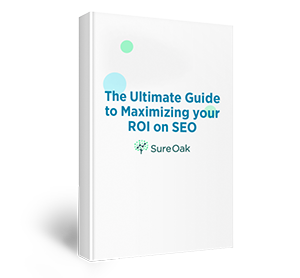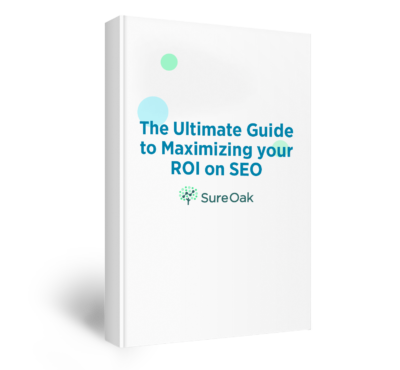How to reach out to Lior Ohayon:
Finding and pitching leads is one of the more stressful but vital components of growing your business online. You never know where your next big client or project will come from, so pitching your product or service to those most likely to need it is a component of your growth strategy that you can’t afford to neglect. Getting your message to the right audience and capturing their attention is a bit of art and a bit of science.
In this installment of the Sure Oak podcast, Lior Ohayon from ScopeLeads helps us understand how to up our game for getting the right leads and delivering the pitch that will help drive sales.
Automation Should be One of Your Last Steps, Not Your First
There are plenty of tools online that can help you mass-distribute emails and scour the internet for leads, but jumping right into automation can be detrimental if you haven’t first established a foundation of a working and viable lead collection strategy. Take the time to do some manual work to determine quality leads; essentially, you’ll need to decide how you can best mine and collect leads before you begin scaling your operation with tools that can be customized to gather them automatically.
Skipping the research and elbow grease to head directly for the automated tools is a good way to get your emails sent to your contact’s spam filters and to waste your valuable time and energy.
Experiment to Find the Right Fit
Fine-tuning your pitch, e-mail formatting, and lead collection strategies take a bit of time, but the return on investment is well worth it. Give yourself a bit of leeway in the beginning so you can create and send a few different e-mail pitches and templates before figuring which is the most successful in garnering replies and moving potential clients through your sales and marketing funnel. If you’re looking for leads, make sure you’re getting the most qualified potential clients. For example, if you’re pitching a reputation management service, you may want to find local businesses on Yelp or Google Maps who have inconsistent listing data or an ineffective way of responding to negative reviews; these businesses are most likely to need your services. From there, it’s important to find the best contact information for these potential clients, to ensure your message is seen by the right team member or employee.
Doing some initial research into vetting leads and honing your e-mail messaging is the best way to improve the success of future automation and lead conversion.
Avoid Common Pitfalls of E-Mail Writing and Lead Generation
First and foremost, don’t pay for leads. While it’s tempting to dole out money to a broker who can send you a list of so-called high-quality leads, the best pay-off comes from doing your own investigating, as mentioned above. Doing your research does take more time, but it’s worth the pay-off in improved conversions and messaging accuracy.
Once you have your leads researched and you have the correct contact information for them, it’s time to send your expertly-crafted and engaging e-mail pitch. Many business owners overthink this part of the process, imagining that they have to be funny, long-winded, or provide links to every resource, website, and client that could corroborate the greatness of their service. However, this couldn’t be further from the truth. While it seems counter-intuitive, Lior actually advises against linking to your company’s website in your cold emails, as this can circumvent your planned sales pitch and lead the client to decide that your service isn’t for them – well before you’ve had a chance to explain how your product and services add value.
You can also skip any attachments and CCing on your cold email templates.
Keep it Simple
According to Lior, the best way to get your message across and encourage your leads to schedule a sales call can be accomplished in three or four sentences. After you greet your lead, move directly into your reason for contacting them today – don’t waste any time in getting to the point. Next, provide some proof of your previous work by simply stating that you’re collaborating with other businesses in the area or even your lead’s competitors. With the last sentence, include a call to action, asking whether your prospective client has time to speak this week or next.
If you’ve decided to include video content in your cold email as a demonstration of your services, you can link to a landing page; avoid sending clients to other sites where your video may be uploaded, like YouTube. If you’re looking to speed up the rate at which you create these personalized emails, include a custom thumbnail instead and ask to be directed to the best person to send the full video content; this tactic can help you gather additional leads at organizations you’re pitching while saving time in the email creation process.
Key Insights
- Do important groundwork for strategy and content creation before employing automated tools
- Keep your email content short and sweet
- Don’t take shortcuts, like buying lead lists or going directly for automation software
- Use a firm call to action in your cold emails
Lior’s Takeaways
- Make sure you have the right contact information for your qualified leads
- Get in the habit of knowing where your leads are coming from
- Ensure your email content proves the value of your products or services
- Work smart; used personalized content to improve lead conversions, but make sure those customized components can be created and sent quickly and easily
Podcast: Play in new window | Download






